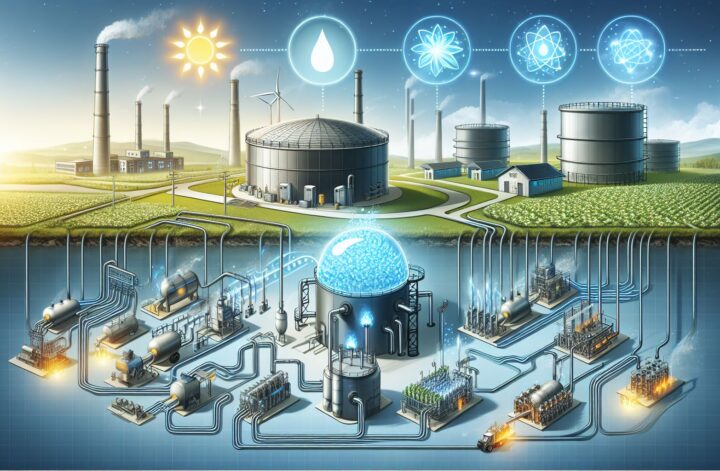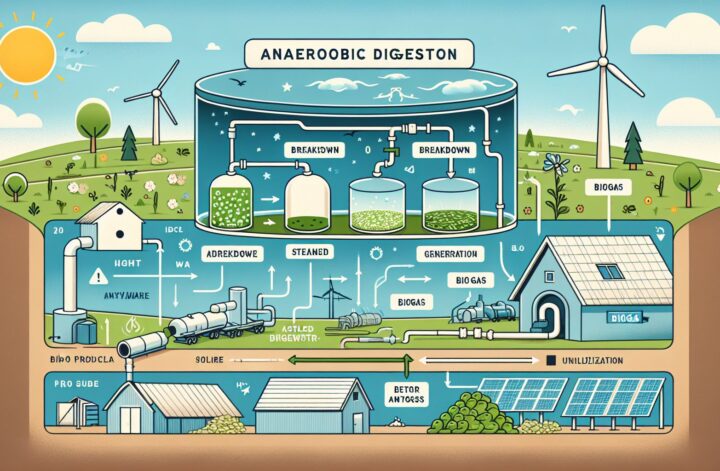
Source: example.com
In our current age of increasing environmental awareness, the need to shift towards renewable, clean, and sustainable sources of energy is more apparent than ever. As the quest for exploring sustainable energy generation methods heightens, the discovery and application of biogas as a renewable energy source have gained almost paramount importance. Biogas production is an eco-friendly process wherein organic matter like agricultural waste, manure, plant material, green waste, and organic waste from industries and households are decomposed in the absence of oxygen, resulting in the release of a composite gas- biogas[^1^].
Understanding Biogas and Its Production
Biogas, primarily composed of methane (CH4) and carbon dioxide (CO2), is a type of biofuel produced through the bacterial decomposition of organic waste in anaerobic conditions (i.e., conditions devoid of oxygen). Some minor constituents include hydrogen, nitrogen, and other gases. The process involved in biogas production, called anaerobic digestion, effectively reduces the volume and weight of waste, trims down pollution, recycles nutrients, and most importantly, provides renewable energy[^1^].
Through the anaerobic digestion process, bacteria break down organic matter into simpler substances, producing biogas and digestate. This process undergoes four main stages: Hydrolysis, Acidogenesis, Acetogenesis, and Methanogenesis[^2^].
-
Hydrolysis: During hydrolysis, complex organic molecules are reduced into simpler sugars, amino acids, and fatty acids.
-
Acidogenesis: In this stage, the products of hydrolysis are further broken down into volatile fatty acids and alcohol.
-
Acetogenesis: Acetogenic bacteria then convert these products into hydrogen, carbon dioxide, and Acetate.
-
Methanogenesis: Finally, methanogens convert these products into methane and carbon dioxide.
The biogas thus produced is generally captured, and after necessary purification and upgrading, it becomes ready for use as a fuel in heating systems, generators or engines[^2^]. The remaining, solids, the digestate, can be used as a nutrient-rich fertilizer.
Biogas as a Source of Renewable Energy
Considering that biogas production utilizes organic waste – a resource that is readily and consistently available, it’s safe to call biogas a reliable and sustainable form of renewable energy. The use of biogas can significantly reduce greenhouse gas emissions by capturing methane that would otherwise be released into the atmosphere—an added incentive for industries to adopt biogas systems[^3^].
Moreover, biogas can be flexibly stored and used as needed, providing an effective backup for periods with little wind or sunlight – limitations often associated with other renewable energy sources. Additionally, the heat generated as a byproduct of electricity production from biogas can also be utilized, making the process highly efficient. This system of combined heat and power (CHP) or cogeneration is particularly beneficial, as it ramps up the overall efficiency to about 80% to 90%[^3^].
Harnessing the Power of Biogas: Future Prospects
The benefits of biogas production extend beyond renewable energy generation. The process can provide significant waste treatment solutions, reduce emissions, and create local job growth. For instance, the organic waste treatment aspect can significantly advance waste management by turning waste into a resource.
As the world braces against the harsh realities of climate change, biogas production stands as an effective and sustainable solution. It not only contributes to renewable energy production but goes beyond – serving as a tool for environmental protection, waste management, and local socioeconomic development. With technological advancements paving the way for more efficient systems, the potential for biogas is ever-increasing. The key to realizing these potentials lies in supportive policies and effective public-private partnerships.
The vitality of biogas production in our quest for sustainability cannot be overstated. By harnessing this unorthodox form of renewable energy, we make a giant stride towards a greener, cleaner, more sustainable future.
Sources
[^1^]: United States Environmental Protection Agency (2020). Biogas.
[^2^]: Energy.gov. How does anaerobic digestion work?
[^3^]: International Renewable Energy Agency (2017). Biogas for domestic cooking: technology brief.




